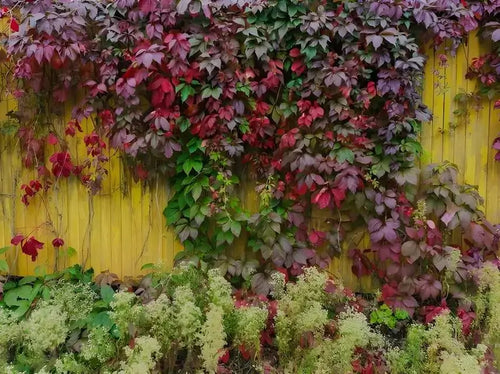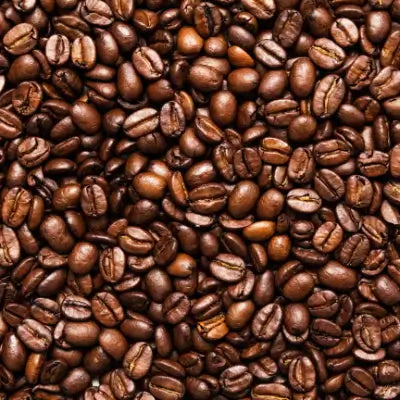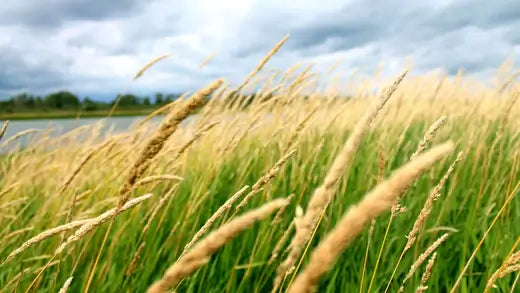Crafting Idyllic Landscapes: A Comprehensive Guide to Landscaping with Virginia Creepers
In landscaping, few plants possess the charm, versatility, and aesthetic appeal of the Virginia Creeper (Parthenocissus quinquefolia). Revered for its lush foliage, vibrant autumn hues, and vigorous growth habit, this native North American vine has captivated gardeners and landscapers for generations. In this comprehensive guide, we delve into the art and science of landscaping with Virginia Creepers, exploring its myriad uses, cultivation techniques, and design principles to create stunning outdoor spaces that enchant and inspire.

Understanding Virginia Creeper
Before embarking on any landscaping endeavor, it's essential to grasp the characteristics and requirements of the Virginia Creeper. This deciduous vine, belonging to the Vitaceae family, boasts distinctive palmate leaves composed of five leaflets, which transition from deep green in spring and summer to a kaleidoscope of crimson, orange, and gold in the fall—a spectacle that adds unparalleled vibrancy to the landscape. Additionally, Virginia Creepers produce inconspicuous green flowers in late spring, followed by small blue-black berries that act as a helpful food source for birds.
Landscaping Applications: Virginia Creepers offers many landscaping applications, ranging from ornamental accents to functional elements within the landscape. Here are some creative ways to incorporate this versatile vine into your outdoor spaces:
Vertical Greenery: Utilize Virginia Creepers to cloak unsightly structures such as fences, walls, or arbors, transforming them into vertical gardens of lush foliage and vibrant color. The vine's adhesive tendrils effortlessly cling to surfaces, creating a verdant tapestry that softens harsh lines and adds visual interest.
Arboreal Adornments With Virginia Creepers

One way to enhance the beauty of trees in your landscape is by enveloping them with the graceful tendrils of Virginia Creepers. These vines can easily climb trunks and limbs, making them a perfect addition to any garden or outdoor space.
When Virginia Creepers are allowed to climb trees, they add a vertical dimension to the landscape and introduce a dynamic interplay of textures and colors. As the vine weaves through the canopy, it creates a beautiful and intricate pattern, which is a sight to behold.
Moreover, Virginia Creepers are not only aesthetically pleasing, but they also have practical benefits. They can act as a natural insulator, keeping the tree cooler in the summer and warmer in the winter. They can also help protect the tree's bark from harsh elements and pests.
Overall, enveloping trees with Virginia Creepers is a fantastic way to enhance the beauty and health of your garden or outdoor space.
Ground Cover Elegance: Deploy Virginia Creepers as ground cover to carpet bare earth with dense foliage, suppressing weeds and erosion while infusing the landscape with lushness and continuity. The vine's vigorous growth habit ensures rapid coverage and long-lasting beauty, whether cascading over rockeries or meandering along garden borders.
Shade and Privacy: Create natural shade and privacy screens by training Virginia Creepers along pergolas, trellises, or lattice panels, forming verdant sanctuaries that offer respite from the sun's glare and shield outdoor living spaces from prying eyes. By strategically positioning the vines, you can sculpt intimate alcoves and secluded retreats that invite relaxation and contemplation.
Cultivation and Care Of Virginia Creepers
Successful landscaping with Virginia Creepers hinges on understanding their cultural requirements and implementing proper care practices to ensure optimal growth and vitality. Here are essential tips for cultivating these enchanting vines:
Site Selection: Select a planting area that acquires partial to full sunlight, although Virginia Creepers can tolerate some shade. Confirm the soil is well-drained and fertile, with a pH varying from slightly acidic to unbiased.
Planting: To prepare the soil for planting, it's best to add organic matter like compost to increase fertility and improve the soil structure. To plant the vine, dig a hole double as broad as the root ball and a little deeper than the original pot. Then, gently place the vine into the hole and fill it with soil, ensuring the root crown remains ground level.
Watering: Provide consistent moisture, especially during periods of drought or extreme heat, to support vigorous growth and prevent stress-related issues. Water intensely but infrequently, allowing the soil to dry slightly between watering sessions.
Mulching For Virginia Creepers
Use a layer of wood chippings around the vine's base to conserve moisture, suppress weeds, and regulate soil temperature. Keep the mulch several inches away from the stem to prevent stem rot and fungal diseases.
Pruning: Perform routine pruning to manage the size and shape of the vine, remove dead or damaged growth, and promote airflow and sunlight penetration. Prune Virginia Creepers during the dormant season to minimize sap bleeding and encourage vigorous regrowth in spring.
Design Principles: Incorporating Virginia Creepers into your landscape design requires careful consideration of aesthetics, functionality, and spatial dynamics. Here are some design principles to guide your creative endeavors:
Color Contrast: Capitalize on the vine's seasonal color transformation by juxtaposing it against complementary or contrasting hues in the landscape palette. Pair the fiery autumnal foliage of Virginia Creepers with cool-toned perennials or evergreens for a striking visual impact.
Texture and Dimension Of Virginia Creepers
Introduce textural diversity by combining Virginia Creepers with plants of varying foliage textures, forms, and growth habits. Create layers of interest by intermingling cascading vines with upright shrubs, ornamental grasses, or architectural features.
Focal Points: Use Virginia Creepers to accentuate focal points within the landscape, drawing the eye toward critical elements such as entryways, architectural structures, or specimen trees. Frame focal points with the vine's luxuriant foliage to create natural vignettes that evoke a sense of harmony and balance.
Seasonal Interest: Design with Virginia Creepers in mind to ensure year-round visual appeal. Incorporate evergreen or structural elements that maintain interest during the vine's dormant phase, providing a cohesive and dynamic landscape composition throughout the seasons.
In conclusion, landscaping with Virginia Creepers offers endless opportunities for creativity, expression, and transformation within the outdoor environment. Gardeners and landscapers can cultivate captivating landscapes that captivate the senses and nurture the soul by harnessing the vine's innate beauty, adaptability, and vigor. Whether adorning arbors, cascading over walls, or carpeting the forest floor, Virginia Creepers epitomize the timeless allure of nature's bounty, enriching our lives and landscapes with their boundless charm and grace. Embrace the art of landscaping with Virginia Creepers and embark on a journey of discovery and delight in the wondrous world of horticultural beauty.


















































